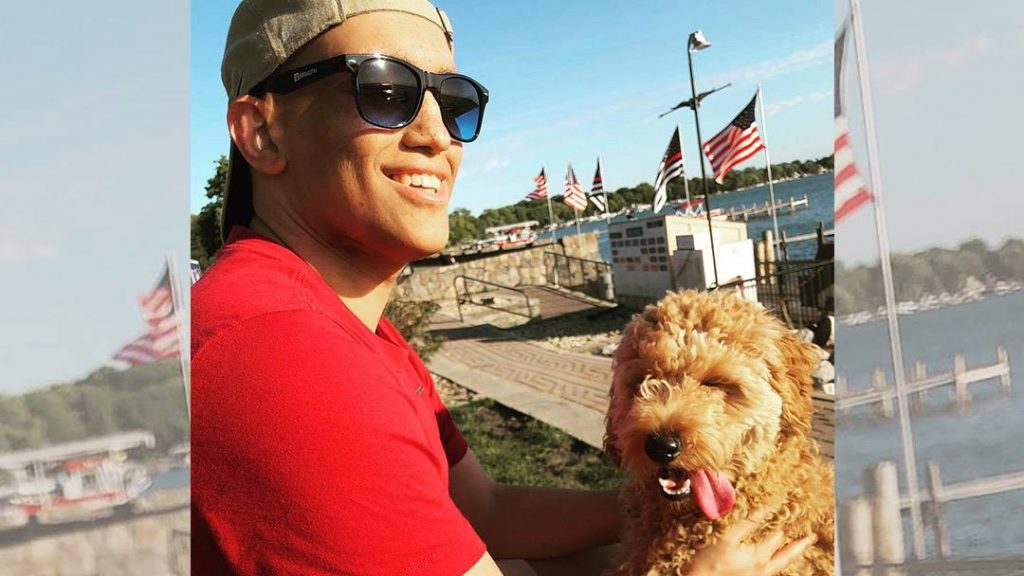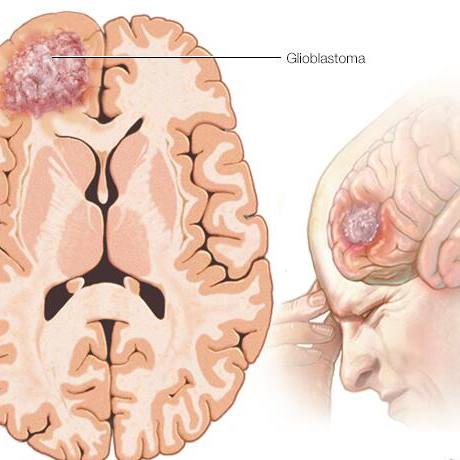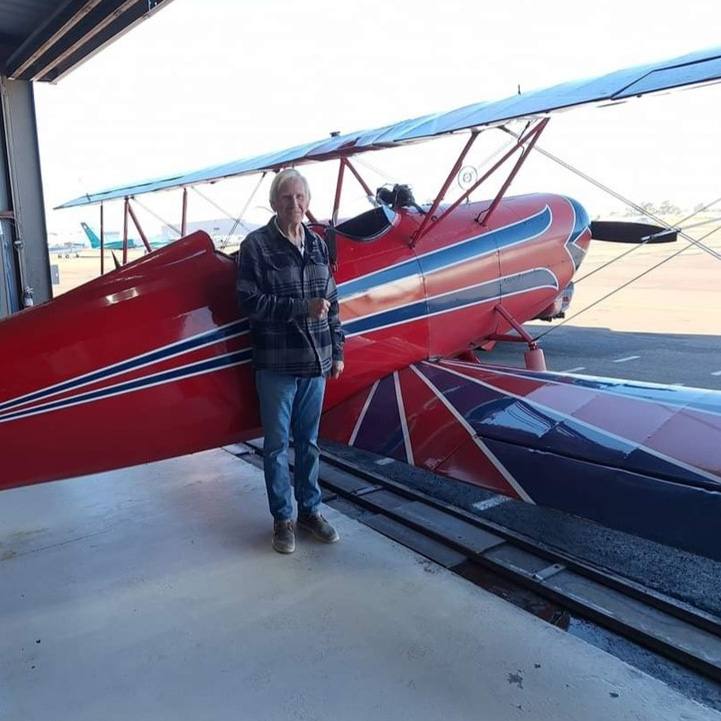-
Cancer
Sharing Mayo Clinic: Innovative treatment moves Conner beyond cancer

When Conner O'Brien was faced with daunting cancer treatment options that carried long-term side effects, his doctors referred him to Mayo Clinic. Today, because of the less-invasive and targeted treatments he was offered at Mayo, Conner's tumor is gone, and his quality of life is excellent.
At 26, Conner O'Brien had just started a new job in Minneapolis working for an association that supports health care and health technology companies. He was a happy, healthy guy, with a future that looked bright.
Then Conner received the stunning news that he wasn't so healthy after all. He had a rare form of cancer called rhabdomyosarcoma.
Conner's doctors in Minneapolis explained that the cancer, located in the muscle of his tongue, was curable. But treatment could involve a combination of chemotherapy, radiation therapy and surgery. And it may require removing his tongue.
"My mind pretty much went blank," Conner says. "I thought of the odds and all the decisions I made that led to this point. I worked out almost every day, and I'm never sick. All I kept thinking was that no matter how I looked at things, nothing that was happening made sense."
Within a week of being diagnosed, Conner began the first of seven cycles of chemotherapy. After completing three of those cycles, scans showed the tumor had shrunk to half its original size, and it had not spread elsewhere in his body. The good news didn't last, however. By the end of the fifth cycle, Conner's oncologist told him that the chemotherapy no longer was shrinking the tumor.
"He said I didn't have any really good options. I could do radiation, which causes a lot of long-term side effects. If I had surgery, they would likely need to take out my tongue," Conner says. "He suggested I have a consult with a friend of his: oncologist Scott Okuno, M.D., director of the Sarcoma Medical Oncology Group at Mayo Clinic."
Welcome news
Conner, who had moved to Clear Lake, Iowa, to live with his parents after his diagnosis, made an appointment at Mayo Clinic in Rochester. "The five days in between those two appointments were the hardest of my treatment," Conner says. "I thought no matter what they ended up recommending, the side effects would be difficult to tolerate."
When Conner got to Mayo, before his appointment with Dr. Okuno, he met with Eric Moore, M.D., a Mayo Clinic head and neck cancer surgeon and facial plastic and reconstructive surgeon in the Department of Otolaryngology-Head and Neck Surgery.
Dr. Moore told Conner he could perform surgery to remove the cancer through Conner's mouth using a robotic arm. That way, Conner would only need to be in the hospital for one night. And his tongue would remain intact.
"His tumor was in the base of tongue, which is far in the back of the throat," Dr. Moore says. "We have worked hard on approaching these tumors through the mouth rather than through traditional and more-invasive approaches that involve going through the neck to get to the throat or splitting the lower jaw in half to get to the back of the tongue."
Conner's relief was immediate. "I was expecting the worst-case scenario," Conner says. "When Dr. Moore sat down and said, 'I looked over your scans and case notes, and I'm pretty sure I can take the tumor out with no long-term side effects,' it was a pretty incredible moment. I was ecstatic."
After that, Conner met with Dr. Okuno to discuss his treatment plan. "He's super nice, and explains things thoroughly," Conner says. Dr. Okuno was interested in gathering more input on Conner's case, so he explained that he would present it at a tumor board meeting — where a multidisciplinary group of Mayo Clinic specialists discuss treatment options and determine the best approach for each patient.
Two days later, Conner got a call from Mayo Clinic letting him know the group agreed that surgery was the best treatment for his situation, and his surgery was scheduled for April 29.
Successful surgery
On the day of his surgery, as he was being wheeled into the operating room, Conner was greeted by a fifth-year Mayo Clinic Otorhinolaryngology resident physician he'd met earlier. "He said: 'I've been thinking about you. And when I heard you were having surgery, I came to sit in on the procedure,'" Conner says. "After that I didn't feel nervous at all. That personal touch from a resident who sees hundreds of patients meant a lot to me."
During the procedure, Dr. Moore used a robotic camera and surgical arms to access the tumor through Conner's mouth. "Because this is a minimally invasive procedure, it shortens the recovery and hospital time from five to seven days to one day, and mitigates the long-term side effects," Dr. Moore says.
"The whole focus of my career is on health care innovation, so to experience that mix of innovation and expertise was pretty incredible."
Conner O'Brien
The surgery was a success, and the surgical team was able to remove all of the tumor. "I felt great when I woke up. A few hours later, Dr. Moore came in and said surgery went great, and he got great negative margins," Conner says. "The whole focus of my career is on health care innovation, so to experience that mix of innovation and expertise was pretty incredible."
Conner's recovery went as smoothly as the surgery. "It healed fast," Conner says. "Within two weeks, I started eating and talking normally."
At the end of May, Conner had a follow-up appointment with Dr. Okuno to go over the pathology report from his surgery. Of the four types of rhabdomyosarcoma, Conner had a type known as embryonal.
"Historically this type of rhabdomyosarcoma responds better to chemo, surgery and radiation and has less chance of recurrence compared to the other types," Dr. Okuno says.
Dr. Okuno suggested additional treatment to ensure all the cancer was gone. "It was the best-case scenario, since I have the lowest risk for recurrence," Conner says. "It was a super-positive meeting. Dr. Okuno recommended I finish out the remaining two cycles of chemo and referred me to radiation oncologist Safia Ahmed, M.D."
Targeted treatment
After reviewing Conner's case, Dr. Ahmed recommended he undergo proton beam therapy, which uses energy from positively charged particles called protons to deliver a targeted dose of radiation. Because doctors can better control where proton beam therapy releases its highest concentration of energy, proton beam therapy is believed to affect less healthy tissue and have fewer side effects than traditional radiation therapy.
"Dr. Ahmed said they would be able to miss my salivary glands and teeth, and the long-term side effects of the treatment would be minimal," Conner says. "That was a big relief in comparison to what I was first told regarding the consequences of normal radiation."
Conner began four weeks of proton beam therapy in June. Scans taken around that time showed no sign of the tumor. "The first three weeks were easy," Conner says. "But during the fourth week, I was very fatigued. My mouth and throat also hurt."
On his last day of proton beam therapy, Conner developed neutropenic fever and had to be hospitalized. The condition occurs when patients have a low number of white blood cells, called neutrophils, that attack bacteria and other organisms when they invade the body. He rebounded well, though, and went home from the hospital after several days.
"It was a tough 11 months, but I can't say enough great things about Mayo. Regardless of the outcome, I knew I was getting the best care in the world."
Conner O'Brien
Getting Conner to the end of his cancer treatment successfully without the dire side effect first predicted was a team effort, says Dr. Okuno. "It's exciting for us that our multidisciplinary team of specialists in Pathology, Surgery, Radiation Oncology and Medical Oncology could get him through this."
In addition to his team at Mayo, Conner credits a community of support for helping him, too. "I have a really amazing family that took care of me, a great group of friends, a pretty strong Catholic faith and a whole group of family friends that were sarcoma survivors that I could talk with whenever chemo was tougher than usual," Conner says.
Now with cancer behind him, Conner is eager pick up where he left off before his diagnosis. He's moved back to Minneapolis and returned to the job he loves in health care technology.
"I feel like I have a pretty great life, and I'm glad to get back to it," Conner says. "It was a tough 11 months, but I can't say enough great things about Mayo. Regardless of the outcome, I knew I was getting the best care in the world."
HELPFUL LINKS
- Learn more about rhabdomyosarcoma.
- Visit the Department of Otorhinolaryngology–Head and Neck Surgery.
- Check out the Mayo Clinic Cancer Center.
- Connect with others talking about cancer on Mayo Clinic Connect.
- Explore Mayo Clinic.
- Request an appointment.







